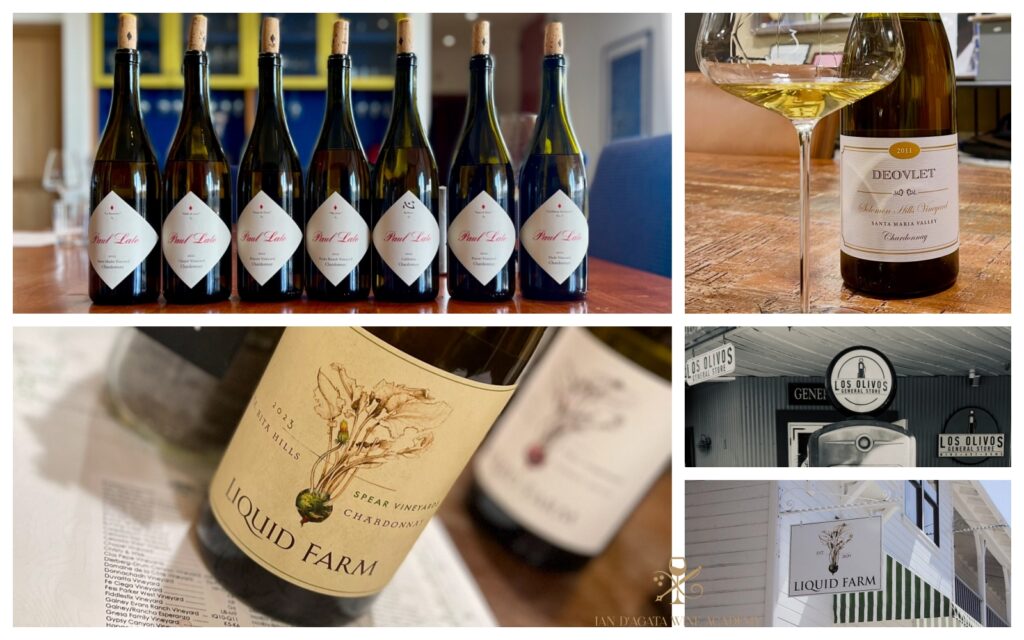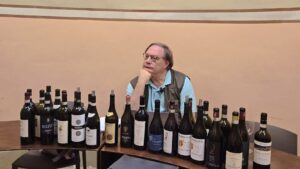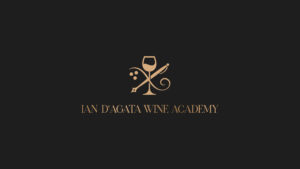When it comes to Chardonnay, Burgundy is the gold standard—centuries of refinement and terroir-driven brilliance have proven that. But here’s a thought: could Santa Barbara County, with its sunny skies and cool ocean breezes, be a worthy challenger? The idea may seem ambitious, but it’s one worth exploring.
My recent conversation with Jeff Nelson of Liquid Farm made a strong case for Santa Barbara’s potential. His conviction was undeniable. What’s exciting about Santa Barbara is that it isn’t trying to mimic Burgundy. Instead, it’s crafting its own unique expression of the grape, shaped by its distinct climate and soils.

The Unique Terroir of Santa Barbara
Santa Barbara County’s viticulture thrives on its anomalies. The region’s transverse mountain ranges, notably in the Sta. Rita Hills and Santa Maria Valley, play a pivotal role. These rare east-west mountain corridors channel the Pacific’s cool marine air directly into the vineyards, creating a microclimate that moderates the sun’s intensity and sets the region apart.
The climate here is Mediterranean, marked by mild, wet winters and dry, warm summers. According to the National Oceanic and Atmospheric Administration (NOAA), Santa Barbara receives an average of 16.3 inches (41.4 cm) of rainfall annually, with the majority falling between November and March. Temperatures further highlight the region’s uniqueness: July, one of the warmest months, averages around 23°C (73.4°F), while January sees averages closer to 13°C (56.4°F). Beyond these averages, the diurnal temperature swings can exceed 11°C (20°F), a factor that’s critical for retaining malic acid in grapes and building flavor complexity.
Interestingly, Santa Barbara often exhibits higher malic acid levels in its Chardonnay wines than those of Burgundy, thanks to its cooler nights and steady ocean influence. This translates to wines with striking vibrancy and freshness, even as the warm days allow for complete phenolic ripeness. The result? A growing season that’s unexpectedly long for its 34° N latitude, enabling a slow, balanced ripening process that defines the region’s distinct expression of Chardonnay.
The Role of Diatomite Soils
The geology of Santa Barbara County is as fascinating as its climate. The Sta. Rita Hills American Viticultural Area (AVA), in particular, is celebrated for its diatomite soils, a pale, chalky-white soil formed from the fossilized remains of diatoms—microscopic algae whose silica-rich shells have accumulated over millions of years. Visually, diatomite looks powdery and brittle, resembling crushed chalk or talcum powder, with a texture that’s light yet surprisingly firm underfoot.
According to the U.S. Geological Survey’s mineral resources data system, these soils are incredibly well-draining due to their high porosity. This forces vine roots to dig deep in search of water and nutrients, a struggle that typically results in lower yields but fruit of remarkable intensity and concentration.
Diatomite’s inert nature means it doesn’t impart color or flavor to the wine, acting instead as a silent partner, allowing the fruit’s purity to shine through. When paired with Santa Barbara’s cool-climate conditions, the result is wines with an impressive balance of power and finesse, offering a vibrant complexity that rivals the very best of Burgundy. The proof in the bottle concerns aging potential: Can these wines age? Aging potential is a touchstone of quality in Chardonnay wine. At a tasting hosted by Paul Lato, I was convinced by the 2008 Sierra Madre Vineyard Chardonnay, still vibrant in magnum after sixteen years. Wines from older vintages that I have tasted for this article further confirmed that Santa Barbara Chardonnays can age with grace, developing complexity over time, evidenced by their structure, acidity, and evolving flavor profiles.
The Challenges
In Santa Barbara County, not every winemaker owns a vineyard. In fact, a significant number of producers here rely on sourcing grapes from independent growers rather than investing in land. It’s a practical approach, one that allows winemakers to access fruit from a variety of terroirs without the massive overhead of land ownership.
This model has its advantages. By working with growers, winemakers can experiment with fruit from different microclimates and soil types, crafting wines that highlight the region’s remarkable diversity. It’s a system that thrives on creativity, giving winemakers the freedom to choose their path. Whether blending fruit from various sites to create a complete, harmonious wine or honing in on the singular voice of a single vineyard, Santa Barbara County is a place where either vision can flourish.
But, like all things worth doing, it comes with its challenges. For winemakers who don’t own the land, picking times can be a logistical challenge. Without direct control over the vineyards, they’re at the mercy of their growers, a delicate partnership that demands clear communication and trust. The grapes don’t wait, and neither does the sun. If harvest timing doesn’t align with a winemaker’s vision, the entire style of the wine can shift. It’s a balancing act, and when done right, it’s nothing short of magic. But no one said magic was easy.
A word on price
In a wine world where value is becoming as rare as a decent airport meal, these bottles hold their ground, impressively affordable in the realm of Chardonnay wines, where Burgundy prices have blasted off into the stratosphere, leaving common mortals like myself clutching their wallets in despair—Santa Barbara delivers the goods.
The wines in this tasting report
This article highlights some of the best and most exciting producers in the region, but I plan to expand it soon to feature even more. I’ve also included a selection of Pinot Noirs. Surprisingly, Sauvignon Blanc stood out to me for its potential to deliver extraordinary results in this area. All the wines were tasted directly at the wineries in October and November 2024.
Deovlet Wines.
I first met Ryan Deovlet in 2009, introduced by a mutual friend over a bottle of 1997 Ronchi di Cialla Bianco—a wine that left a lasting impression, much like Ryan’s work. Ryan approaches winemaking as a meticulous explorer, crafting wines with purpose and clarity. His style leans toward precision and focus, producing wines that demand attention with their complexity and reward patience with their depth.
Ryan’s Chardonnay program exemplifies his thoughtful approach. Fermentation begins in tank before moving to barrel, where minimal lees stirring during 14-15 months of élevage preserves vibrancy and balance. The wines then finish in tank, ensuring a crystalline expression of site and fruit. While Ryan’s wines can lean toward a more restrained and vertical style, this is a deliberate choice. For those who appreciate finesse and a focus on minerality and structure, these wines will be nothing short of thrilling. Excitingly, Ryan is spearheading the first vineyard planting in Los Osos, a unique subregion of the San Luis Obispo AVA. His wines are precise, focused, and built to age, embodying his deliberate and transparent winemaking philosophy.




